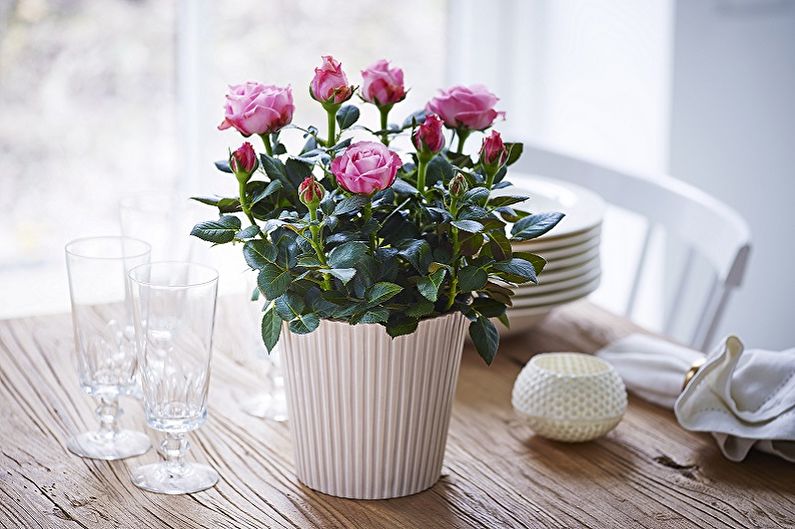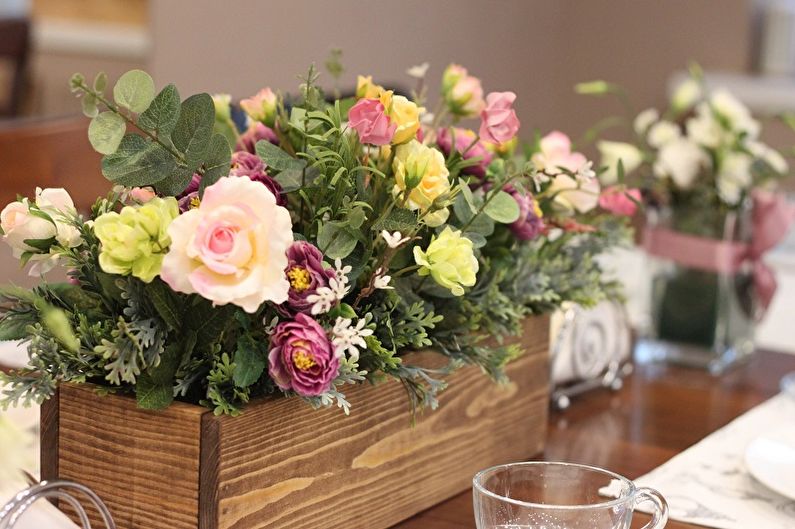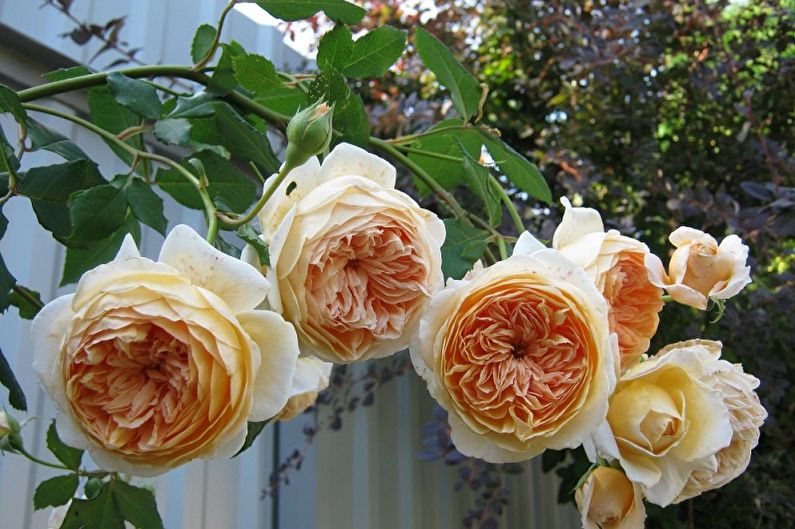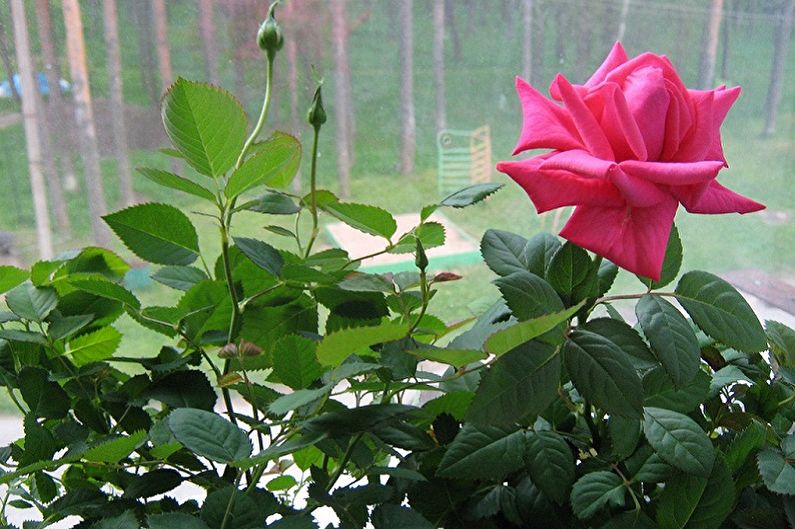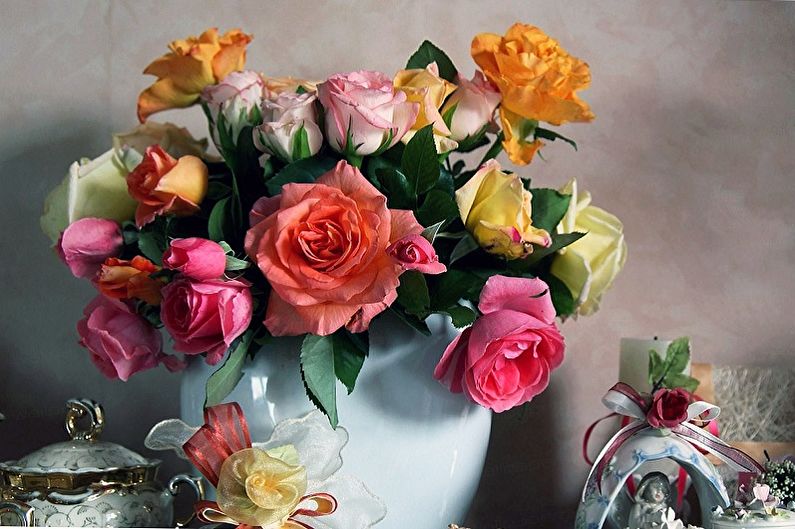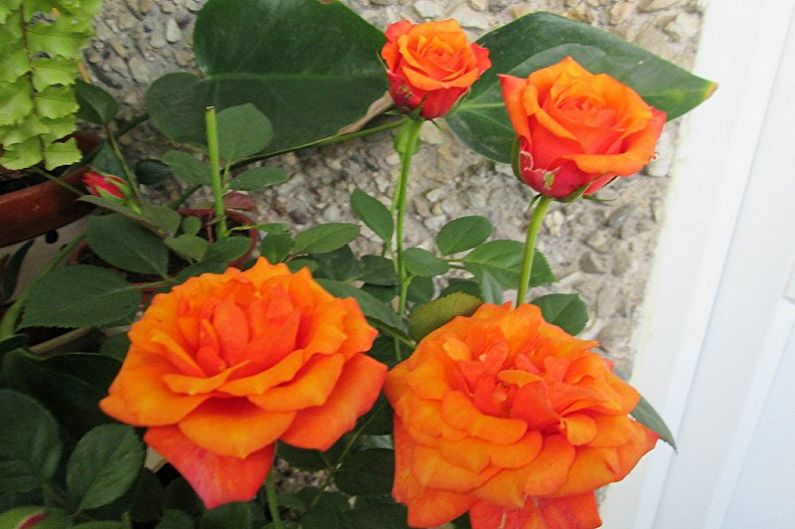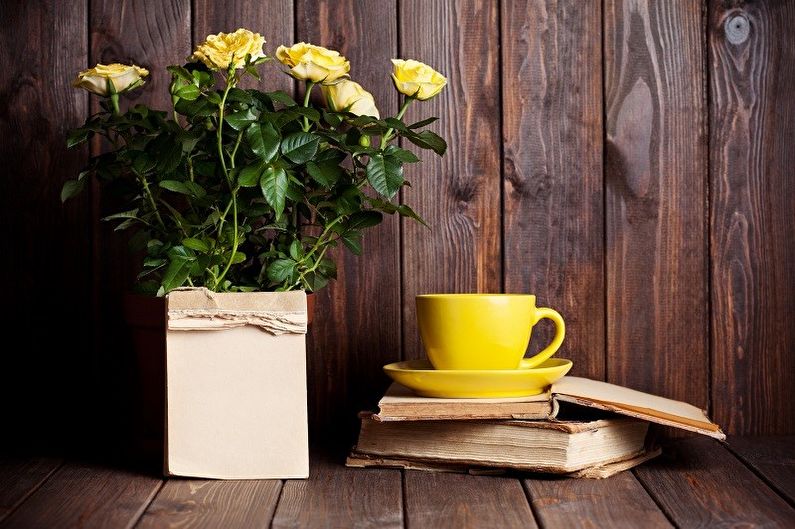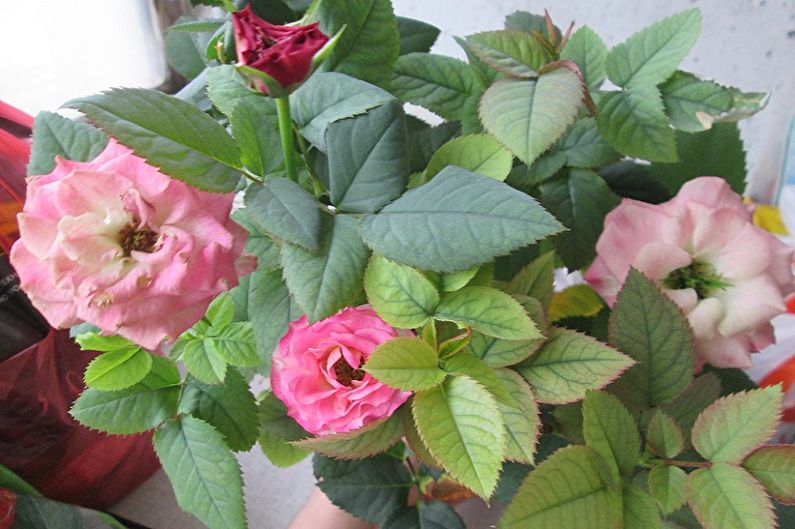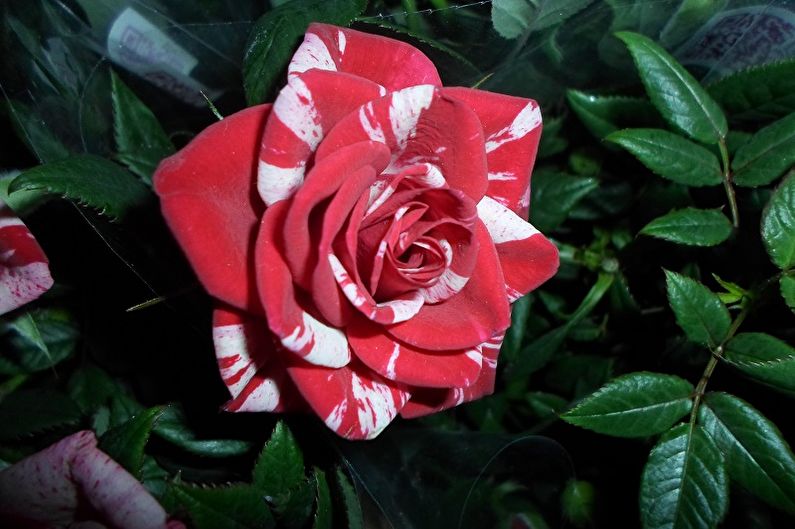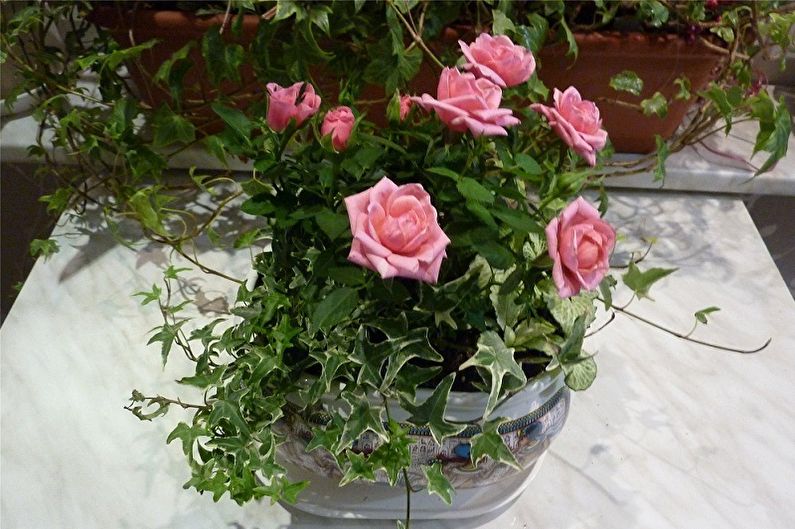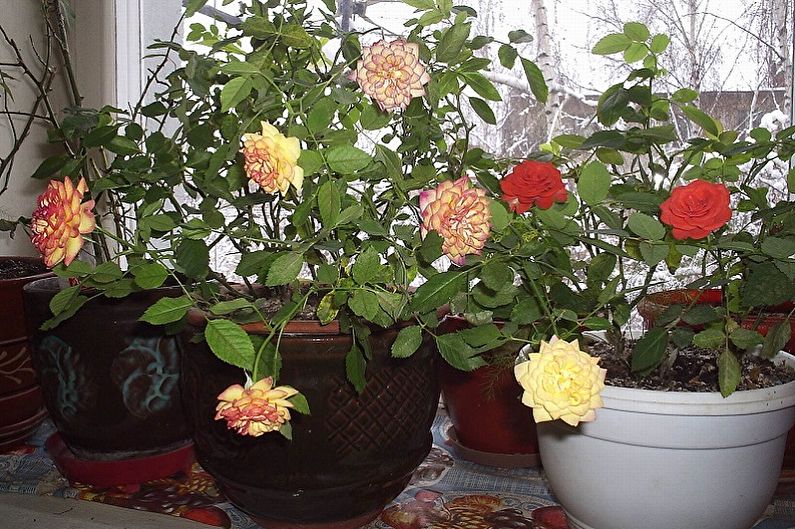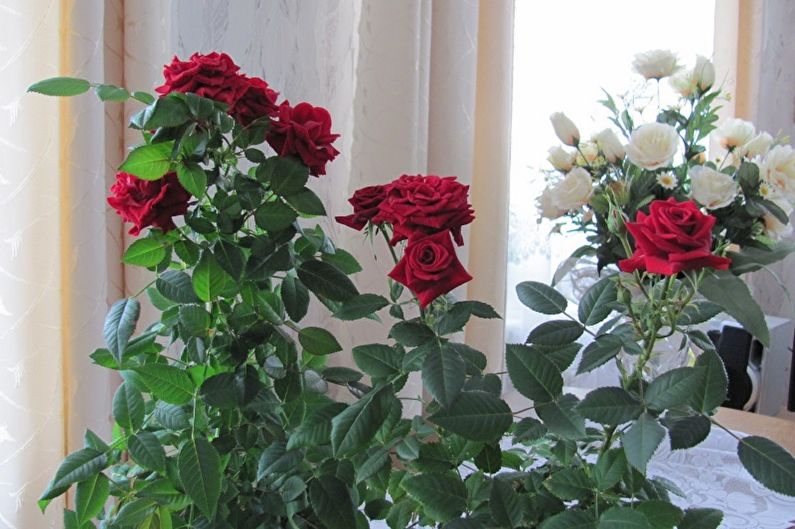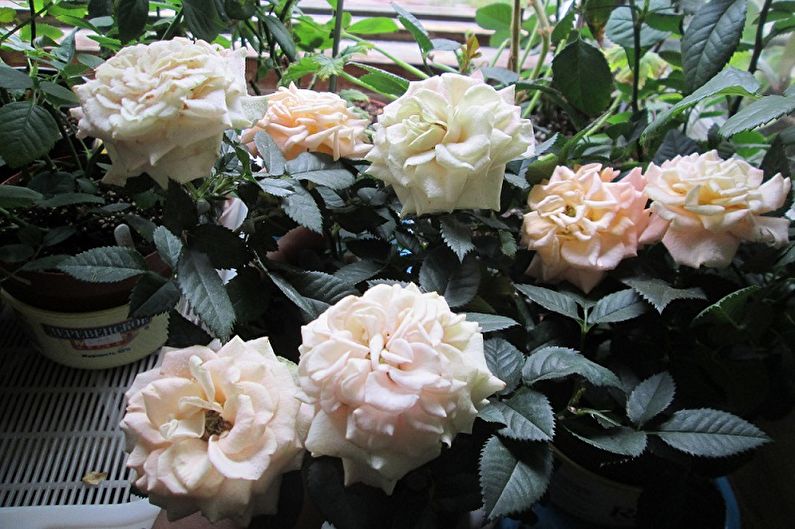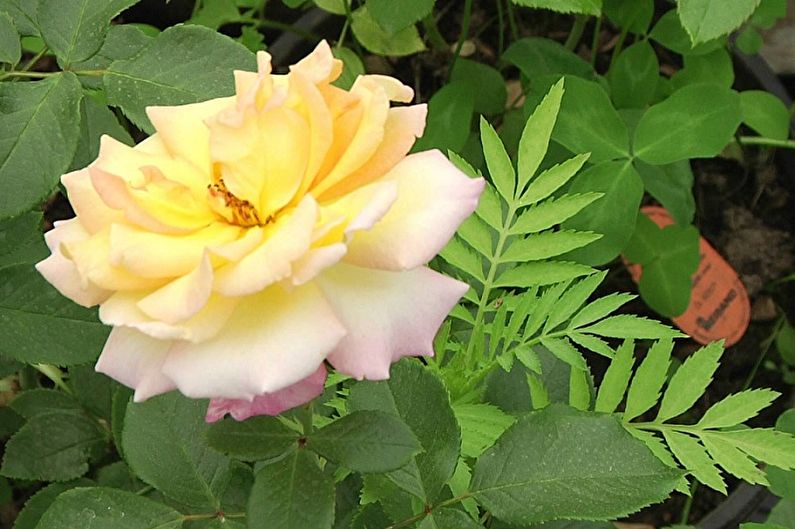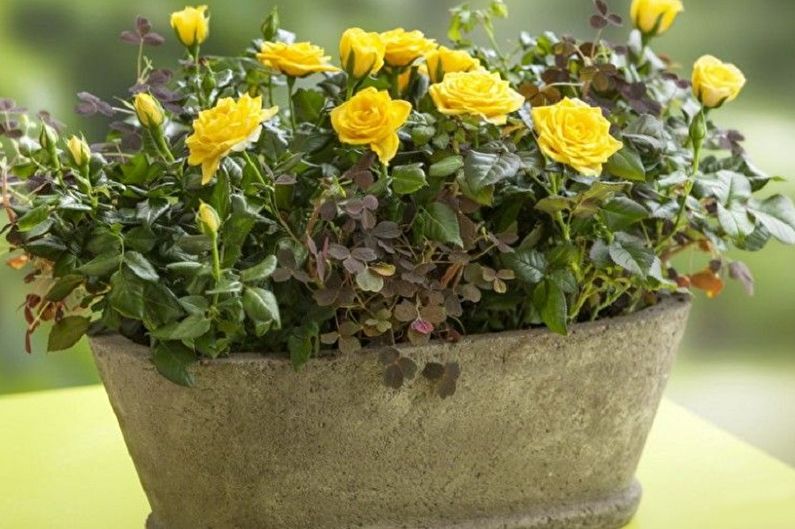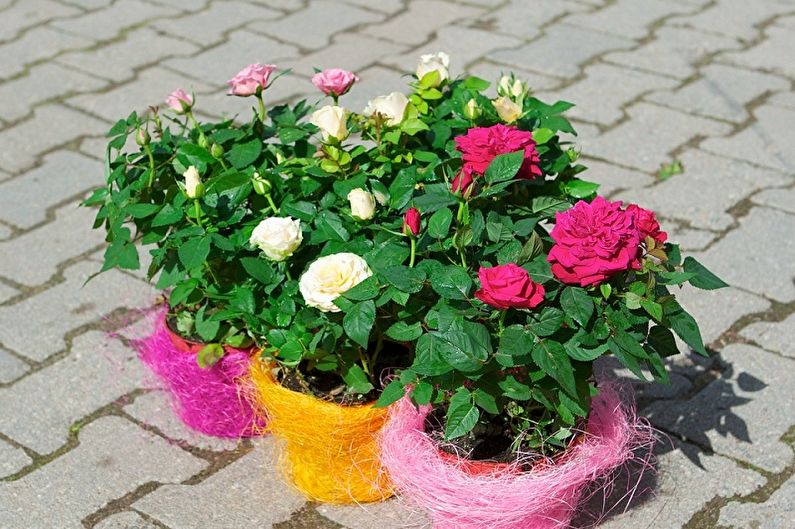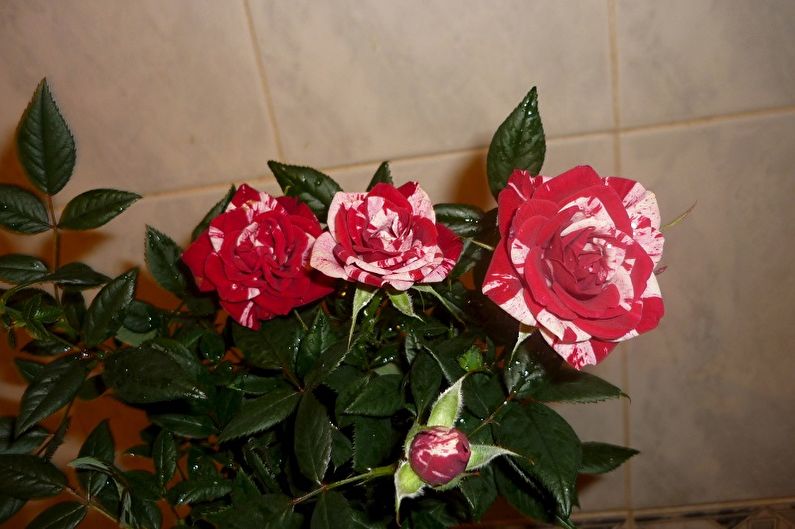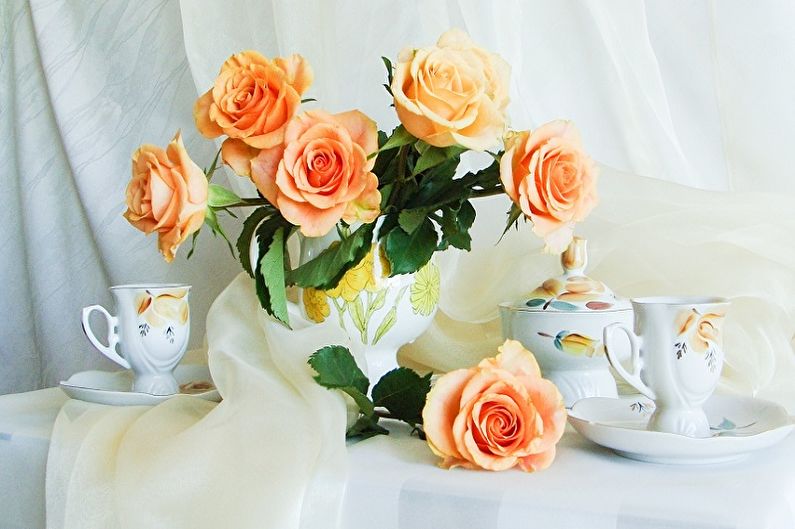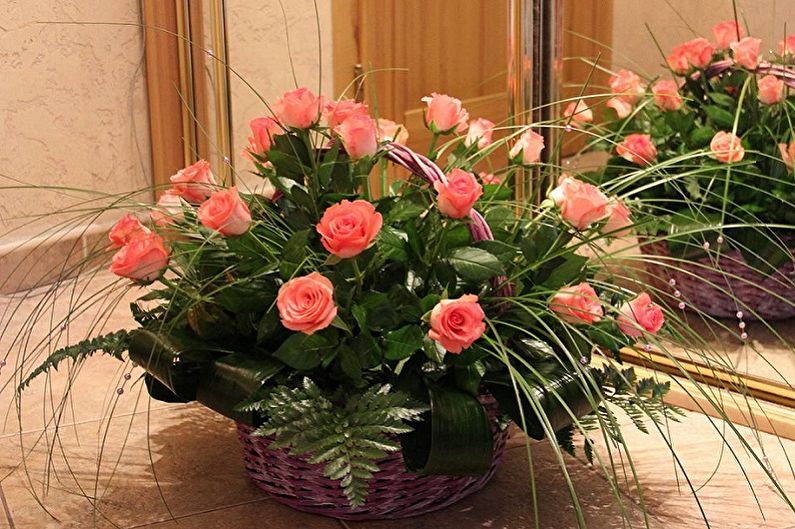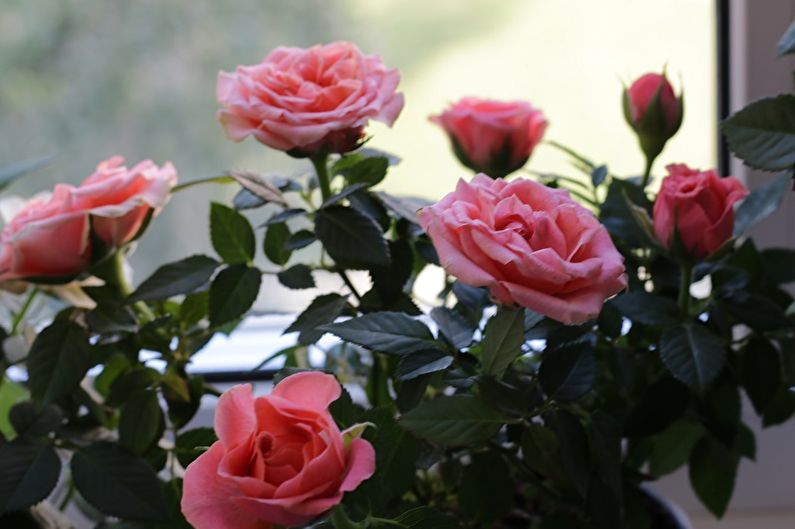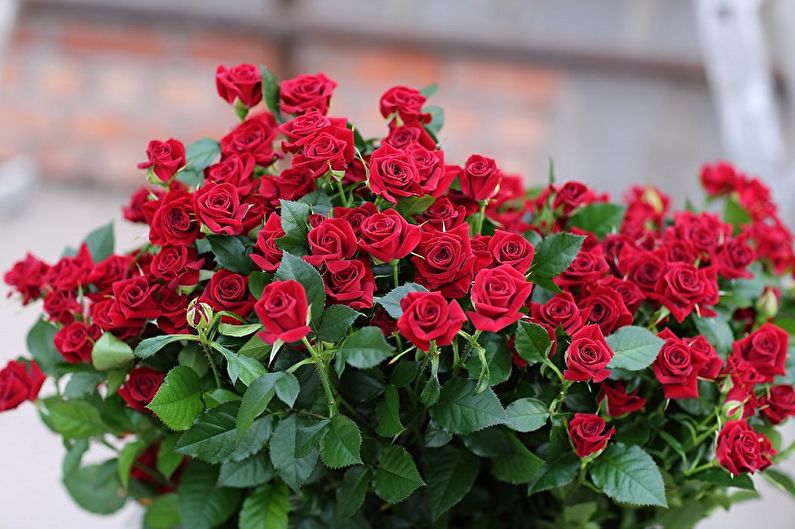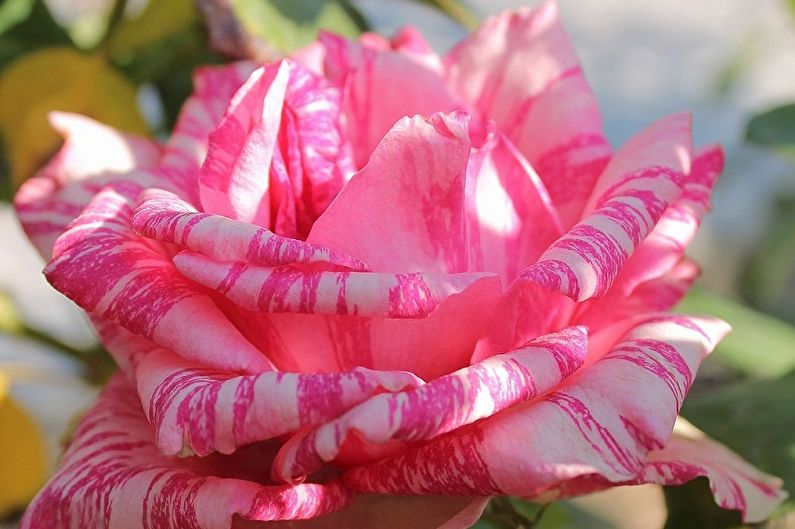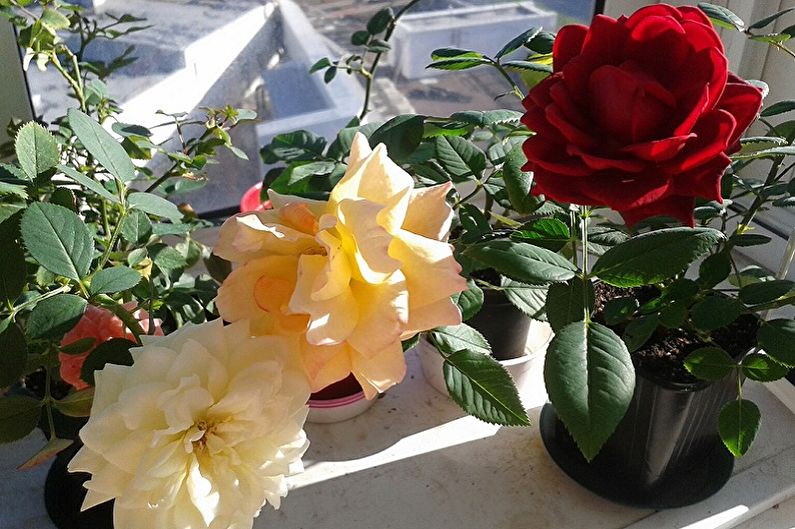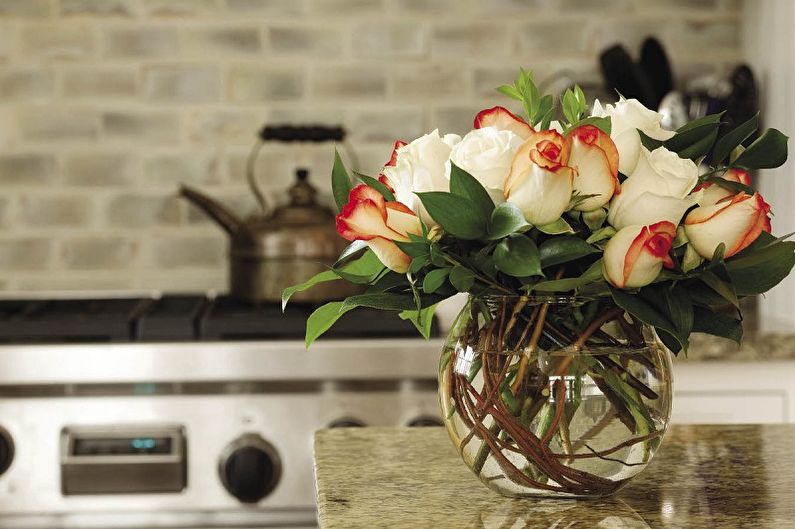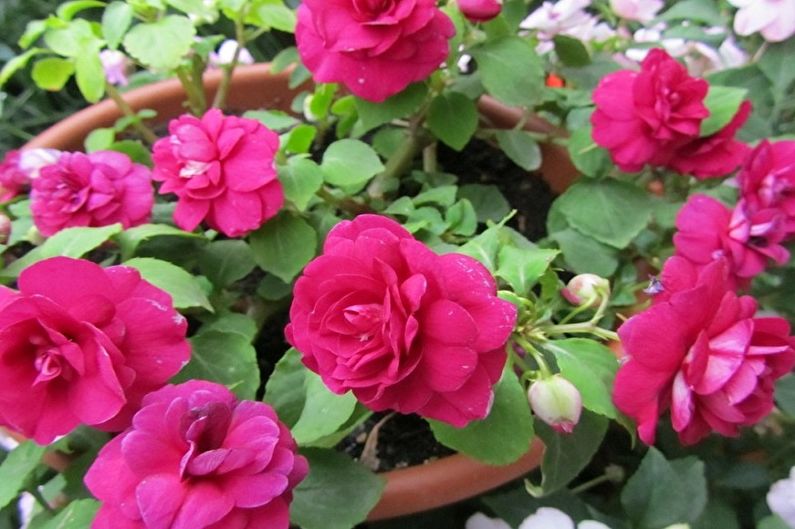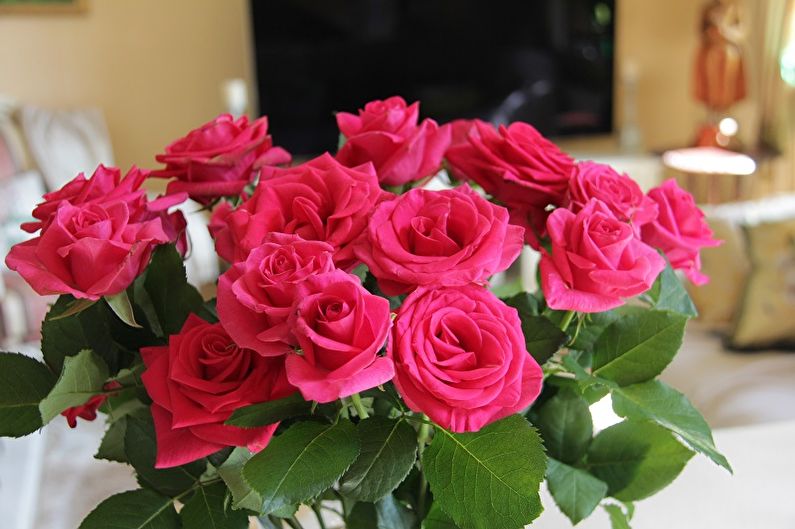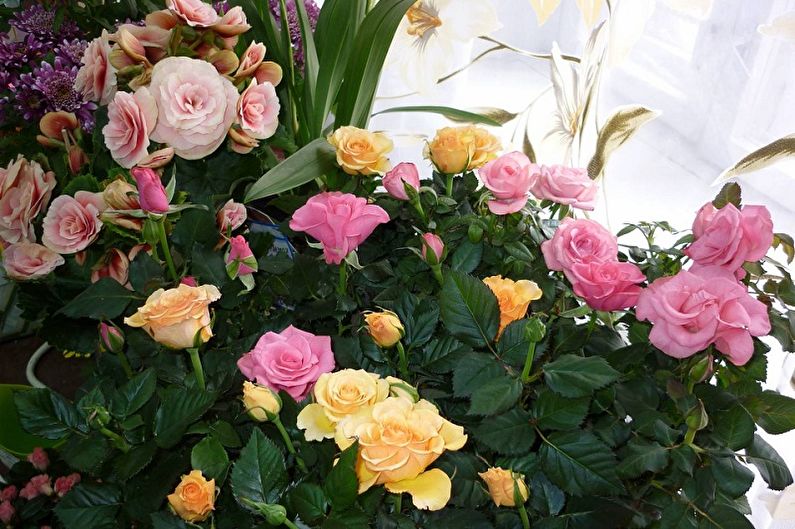
Roses are the prerogative of not only gardens and greenhouses. They are well grown and at home. Breeders even bred special varieties that feel comfortable in apartments and fit perfectly into the interior. Moreover, indoor roses can bloom at home all year round, and in terms of beauty and aroma they are not inferior to luxurious garden ones.
General characteristics
Indoor roses are an extensive category, which includes many varieties. Some differ only in color, and some have almost nothing in common. This allows you to choose the perfect option for any interior.
The average height of indoor roses is up to half a meter, but there are also large species. An interesting option is creeping roses, which cover the whole space, braid supports and look interesting in hanging flowerpots.
A classic indoor rose is a small bush with carved or lanceolate leaves and colorful flowers, from white and cream to pink, scarlet or deep yellow.
There are still debates about the origins of miniature roses. Some call them the birthplace of China, others - Southeast Asia.
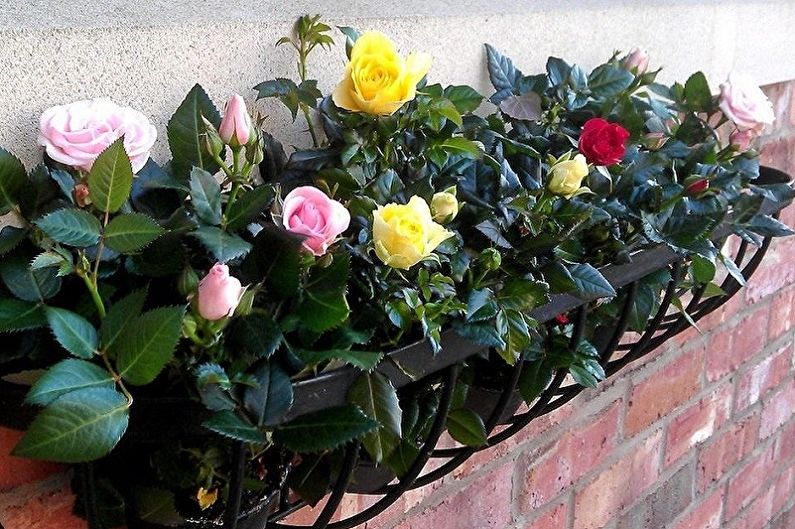
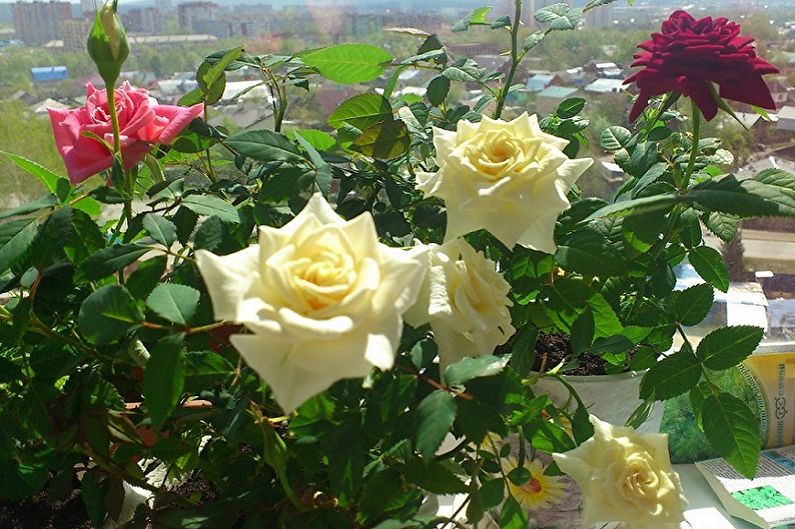
Types of room roses
Not all varieties of roses are suitable for home. They were taken out specially for years to fit into the conditions of the apartment. When choosing, be sure to pay attention not only to size and appearance, but also to the conditions of detention. Some varieties have their own specific features. Following all the recommendations will help prolong the flowering of even the most capricious indoor roses.
Tea rose
Tea rose is an Indian classic. It was bred on the basis of a number of Bengal varieties. Unlike dwarf breeds, tea roses can be quite large, even two-meter, although there are miniature species, up to 20-30 cm. Most varieties of tea roses are ideal for home, because they were created for this. They are beautiful, delicate and fragrant, with dense green foliage.

Chinese rose
A feature of the Chinese rose is its small flowers, which are densely, almost completely cover the entire bush. It is appreciated precisely for its decorative features.
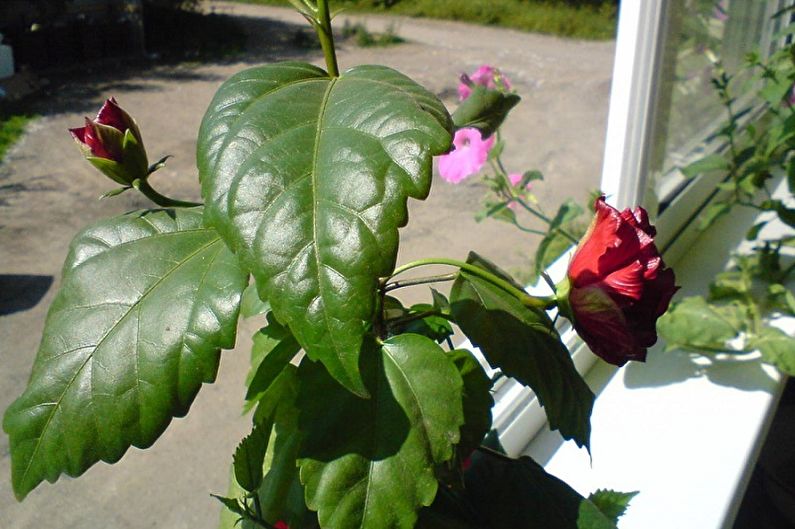
Bengal rose
A short bushy rose with small and flattened pointed leaves is suitable for those who cannot stand harsh aromas. It almost does not smell, but the shades can be any. At one time, it was Bengal roses that were the first to take root in Europe as the only and unique flowering variety. Although now, of course, the choice is much greater. They do not require specific care and even trimming. It is enough to trim dry and painful branches.
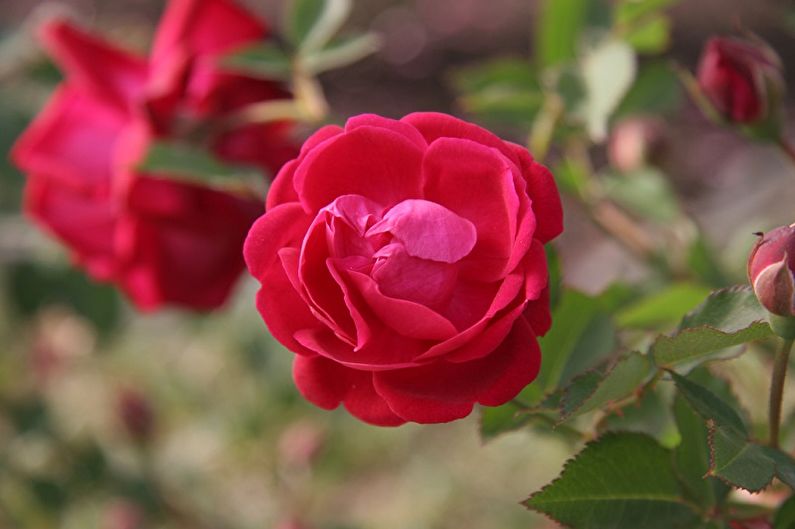
Bourbon rose
This is a beautiful and decorative variety with large flowers, but when it leaves, it requires rest for the winter. Intensive flowering lasts from summer to December, after which the plant drops its leaves and comes back to life by April.
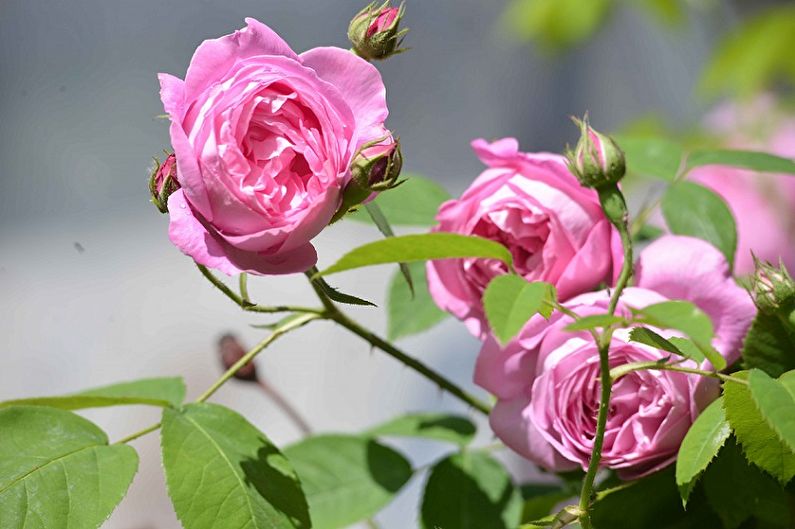
Rose hummingbird
These are two subspecies of roses bred by one enterprise. The first variety appeared by the end of the fifties, and the second - twenty years later. Bushes are compact, dense and not wide. Leaves of a dark shade, dense and shiny. Medium terry flowers are known for their delicate aroma. They are collected in an inflorescence of several pieces. Classic shades - yellow apricot.
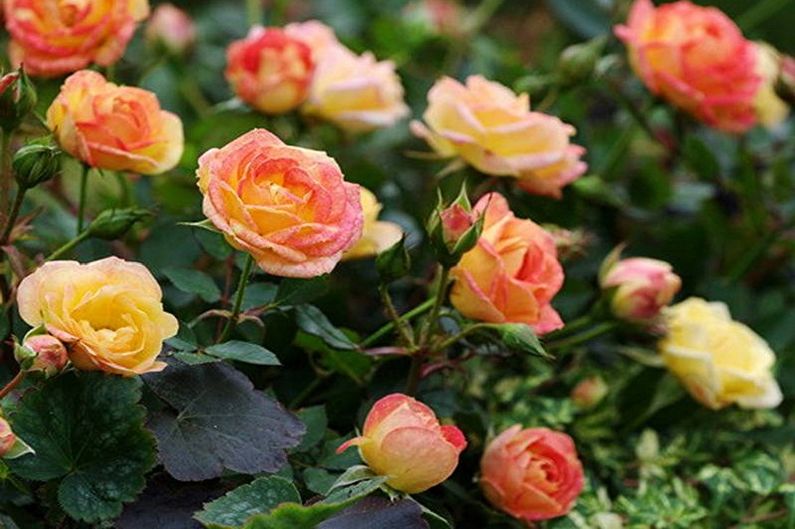
Polyanthus rose
Polyanthus roses are indoor varieties that were created by crossing branching garden ones. They are the result of many years of selection. The bushes are small, branched and dense, on average - fifty centimeters. In some varieties, flowers are collected in brushes. There are semi-double and terry subspecies. Polyanthus roses feel great not only on window sills, but also on balconies or terraces. They are also used to decorate borders.
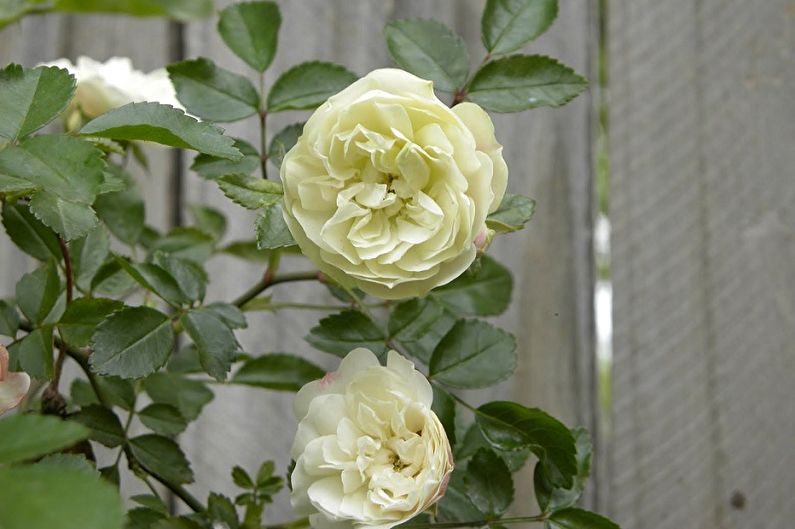
Repairing rose
A popular indoor variety, which is famous for its unpretentiousness. The flowers are medium sized, but of all kinds of colors. Such a rose blooms all year.
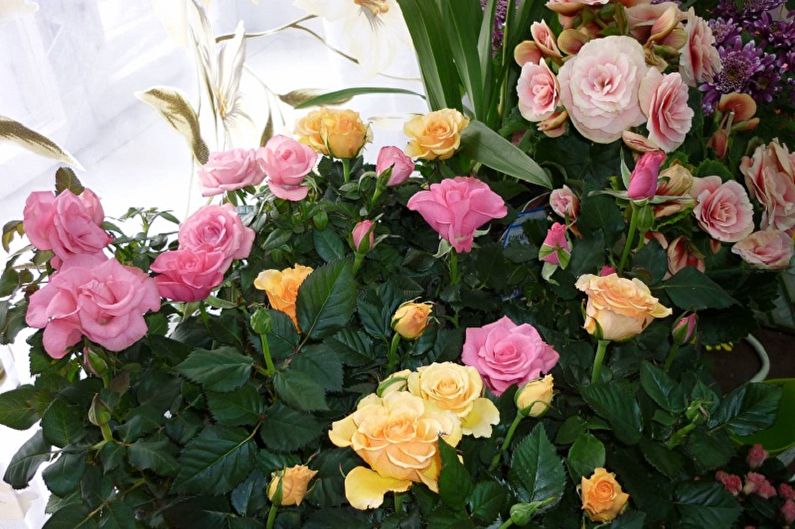
Rose Danica Mix
A small compact thirty-centimeter rose with flowers rather large for her. The average diameter is 3-4 cm, and the colors are the most diverse. When choosing a place for this variety, it should be borne in mind that Danica needs sunlight and high humidity.
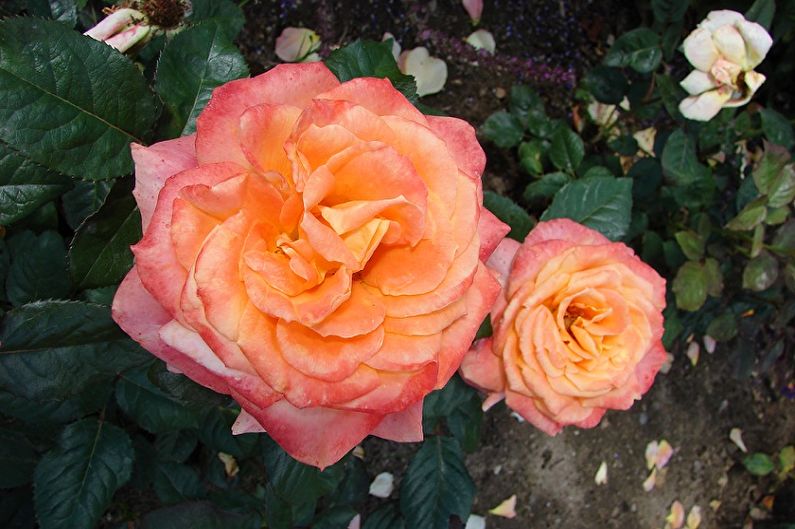
Rose Baby Masquerade
An interesting variety with almost no thorns. Thirty-centimeter shoots are strong and weakly branched. Against the backdrop of shiny dark leaves, chameleon flowers look especially advantageous. Over the entire flowering period, their color changes several times, from lemon to deep red. Another feature is a delicate fruity aroma.
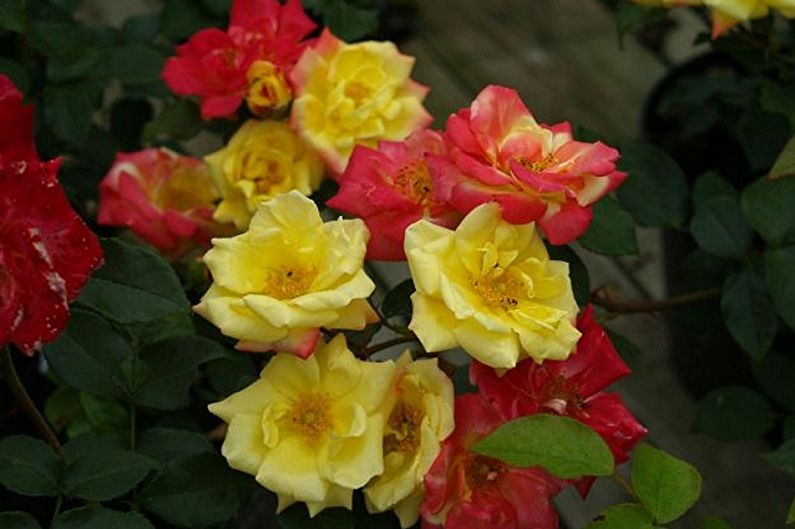
Caring for a room rose
Most varieties of indoor roses are more than unassuming. They have enough sun and water, but in hot summer days do not forget about partial shade to protect from direct sunlight. It is especially important that the root system does not overheat, so pay attention to light flowerpots and planters.
The best rose grows in fertile soil, but this is not important. Introduce humus, turf, sand, mineral fertilizers into the mixture. The first feeding is two months after the purchase. In garden centers, flowers are already saturated with everything you need. During bud formation, increase the amount of potassium and phosphorus. It is important not to overdo it with fertilizers, otherwise the bush will begin to actively increase its deciduous mass, but will not bloom.
Roses need air. Ventilate the room constantly, and in season - take flowers out onto the balcony or the street. Feel free to open the windows, but do not allow drafts.
Another important nuance is air humidity. If it is too dry, the leaves wither and fall off. In winter, during the active operation of radiators and the use of heaters, place water containers on flowerpots. For varieties that go into hibernation, moisture is reduced to a minimum. It is enough that the root does not dry out.
In the summer, water the rose as needed: when the topsoil dries. Due to excessive dampness, the root begins to rot. Pour water out of the pan regularly. In the heat, arrange a warm evening shower from the protected water. The procedure can be repeated several times a week.
The need for pruning depends on the particular variety. Some house roses do not need it at all, others need to remove weak and incorrectly growing branches, and still others need to be completely formed. But in any case, you need to regularly remove fragments damaged by diseases or parasites.
During the period when the rose most actively grows and develops, weekly add complex mineral fertilizer to the ground. In the cold season, the feeding interval is reduced to 1-2 times a month. It is more convenient to use solutions. For old bushes, a soft foliar method is suitable - spraying.
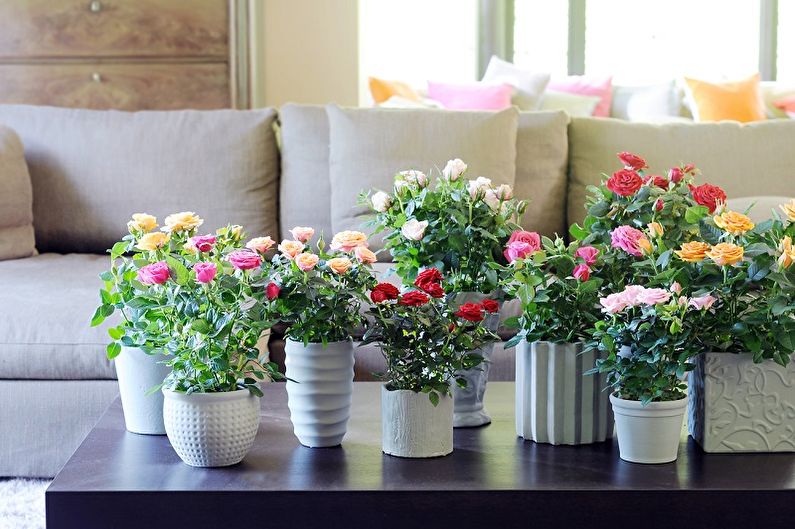
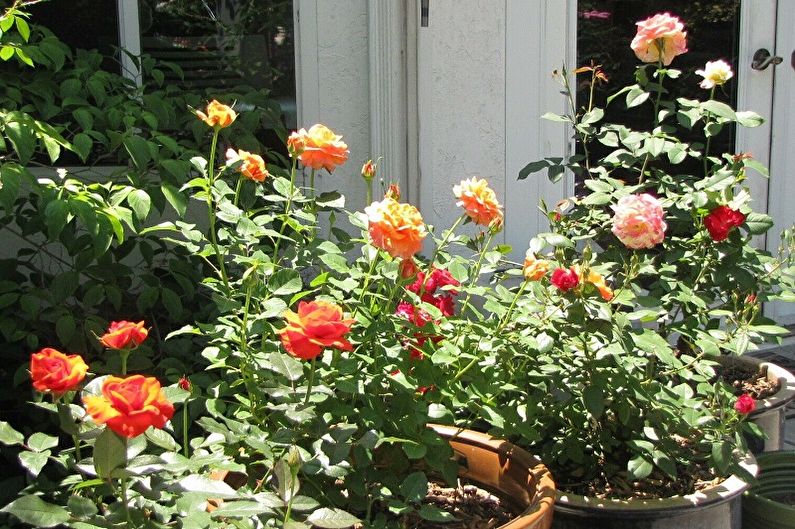

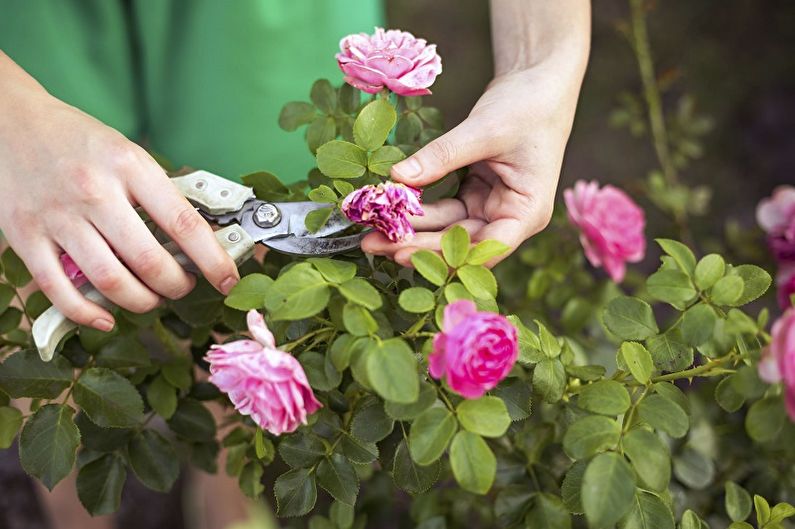
Transplantation and reproduction
When choosing indoor roses, like any other decorative selection plants, give preference to those that were grown from cuttings. Seed sowing does not fully preserve all species features, and a grafted rose is unlikely to survive a sharp change in conditions.
Transplant the rose at least a couple of weeks after purchase to adapt. A thick ceramic pot is better for her. Do not forget about expanded clay drainage, pebbles or fragments of brick. For transplantation, a delicate transshipment method is used so as not to injure the root system and not to change the type of soil so dramatically.
A room rose is transplanted with a whole earthen lump. For young flowers, the interval of transplants is once a year. For 3-4 year olds, as needed.
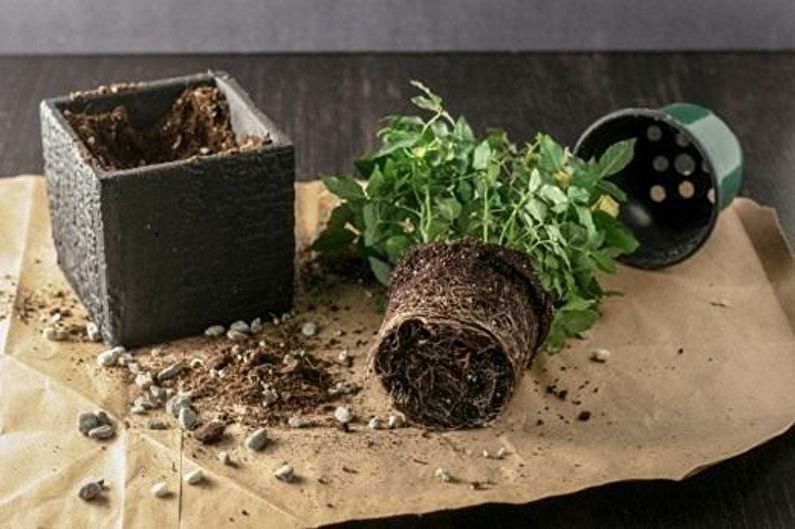
Pest and Disease Control
Even an unpretentious indoor rose is sometimes attacked by pests and diseases.
The most common problem is the spider mite. Sooner or later, all flower growers come across it, so get ready in advance.Inspect leaves regularly for parasites and general condition. Stock up on specialized insecticides in advance.
The second problem is the scale shield. It is easy to detect by dark growths on leaves and stems. They can be removed mechanically and only after that proceed to treatment with insecticides.
For the prevention of fungal diseases, it is necessary to periodically spray the plant with fungicides. Symptoms of different manifestations are similar: these are spots, plaque, rot. Damaged areas must be carefully removed so that the infection does not spread.
Consider also that the rose is a moody plant in terms of the neighborhood. It almost does not tolerate the environment and blooms better and more magnificent if all attention is given only to her.
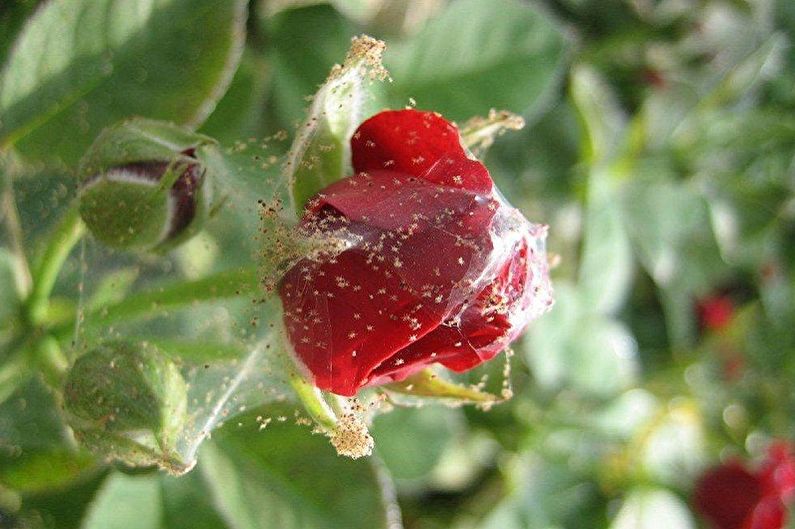
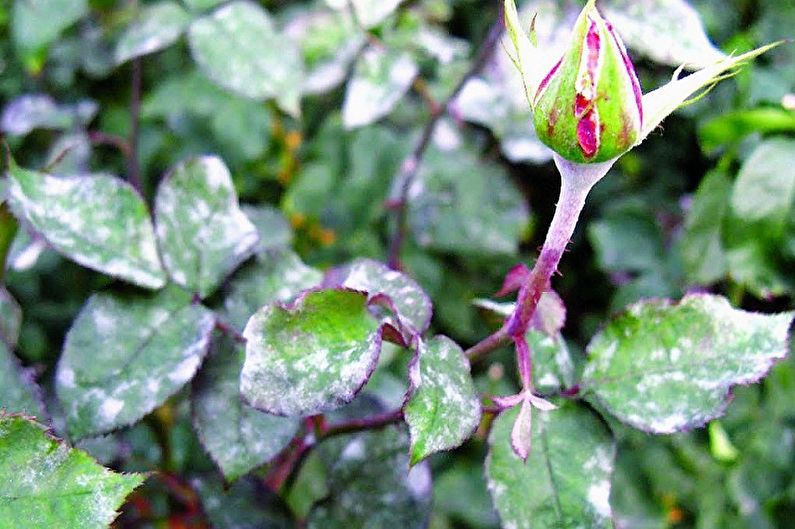
Indoor rose - photo
Still have not decided where to place a room rose successfully so that home seedlings are not only healthy, but also beautiful? We have compiled for you a selection of the most interesting photos. Enjoy watching!
